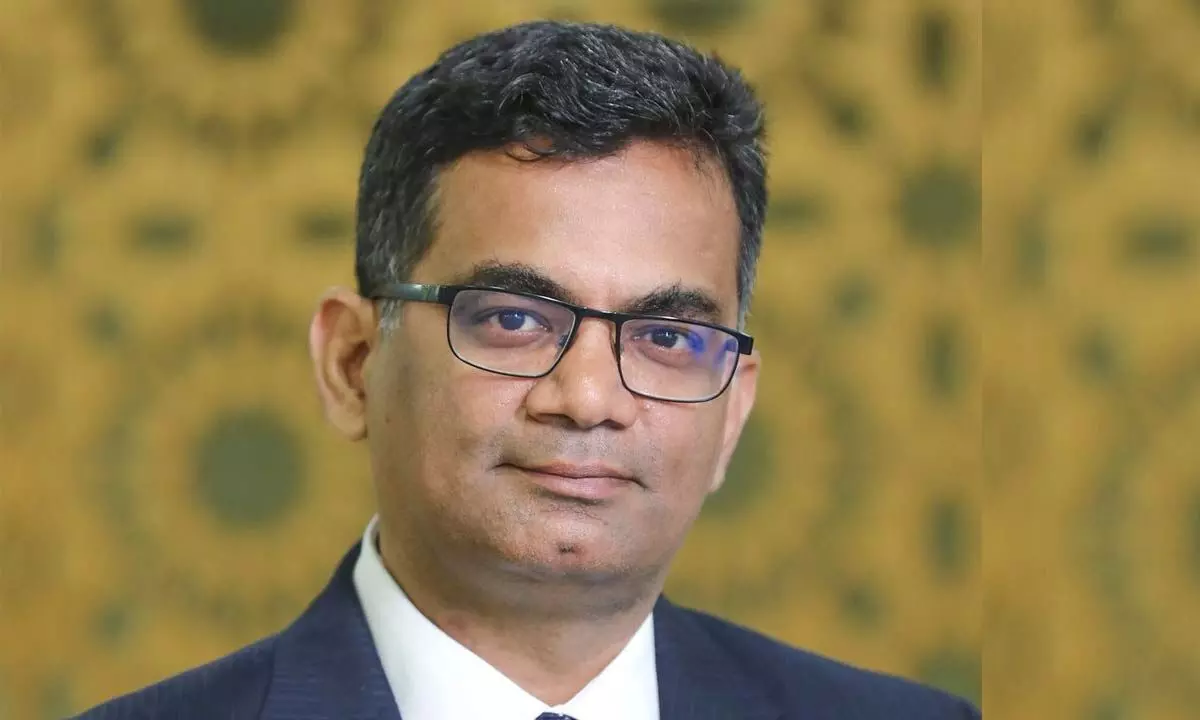Sharp global slowdown to act as headwind for domestic growth
RBI has done well to raise interest rate over last one year, the interplay between inflation and rate differential of US and India needs to be watched, says UTI AMC’s Amit Premchandani
image for illustrative purpose

Impact of higher interest rates globally has just started to reflect in the global growth and our own export numbers. “Sharp global slowdown is likely to act as headwind for domestic growth,” says Amit Premchandani, Senior Vice President & Fund Manager – Equity, UTI AMC in an exclusive interview with Bizz Buzz
What are some potential risks or challenges that could impact the Indian economy in the near future?
India has seen sharp increase in the current account deficit in 2022, which has also started to impact our currency off late. Managing currency volatility in environment of volatile capital flows and high current account deficit is a challenge. RBI has done well to raise interest rate over last one year, the interplay between inflation and rate differential of US and India needs to be watched. Impact of higher interest rates globally has just started to reflect in the global growth and our own export numbers. Sharp global slowdown is likely to act as headwind for domestic growth.
Can you list some of the difficulties that the equity market might encounter in the near future as it retests budget lows?
Impact of the sharp increase in rates will reflect in growth in 2023 as monetary policy works with a lag. Valuation have corrected globally through it’s unclear whether it account for earning downgrades which are likely if recession sets in. India which has been a positive outlier in most of 2022, has seen its outperformance tapering of over last 3 months as China opened. The premium of Indian markets which had expanded meaningfully has corrected back to normalized levels. Valuation in India are now at above average levels, while earning growth has started to taper down, with this quarter seeing earning downgrades at aggregate levels, this reduces probability of multiple expansion, hence return will largely be subject to earnings growth. FY24 earning numbers are now looking vulnerable to further cuts. Higher interest rates also open avenue for investment in fixed income instruments, earning yield is now at significant discount to G Sec yield which provide better risk reward for fixed income instruments.
Which sectors in the Indian market are expected to provide healthy returns in the coming year, and why?
UTI Value opportunity fund has exposure across many sectors. Some of the sectors we find attractive from our value investment framework are outlined below:
Financial Services: The Fund has overweight exposure in the sector with large active weights across large well-capitalized banks. The sector will continue to undergo consolidation of market share in favor of limited well-run banks. Loan growth has revived with pick-up in nominal GDP while higher inflation has also led to working capital led demand from the corporate sector. Retail remains the key driver of loan growth. Sharp margin expansion may see some reversals from next year while asset quality remains pristine.
Healthcare: Healthcare is another sector we are bullish on account of low healthcare expense to GDP, high quality manufacturing base in pharma which can cater to overseas exports. Growth runway is also long with unfortunate trend of rising chronic disease linked to lifestyle changes. We remain positive on growth and profitability in the domestic pharma market. Valuations are now broadly in-line with long-term averages in the branded generics space.
Valuation in diagnostics space has seen sharp derating which provide decent opportunity in high ROIC business at reasonable implied growth, though competitive pressure remain an overhang.
Metals: Metal prices have significant impact from global growth as well as China residential real estate cycle. After 3 years of semi lockdown, China has opened, this provides tailwind to the metal sector. At stock level, leverage has gone down sharply over last 3 years as companies used strong cash flows to reduce debt and leverage.
Automobile: The sector is showing cyclical uptick in volume growth after remaining under pressure over the last few years with PV most impacted. CV and PV are showing strong signs of demand revival while 2W is showing early signs of recovery. Overall, the sector is poised for a cyclical uptick in margins and growth. Replacement demand as well as preference for personal mobility would be a tailwind going forward. OEMs are largely cash rich with decent balance sheet.
IT: The sector has seen significant correction in CY22 from decadal high valuations post run-up in 2021. Implied growth is now reasonable across many names, though headline valuation is still higher than long term averages. The sector remains positive on business dynamics given its resilient business model, decent deal flow, healthy cash flow profile and high FCF yields, though impact of US recession/slowdown is not yet clear.
Can you provide an overview of the performance of the UTI Value opportunities fund in the recent past?
UTI Value opportunity fund has outperformed its benchmark on 1 and 5-year basis as on early March 2023. We follow the principle of intrinsic value - instead of the traditional multiple-based definition of value for portfolio management. Key drivers of the performance have been our investment philosophy, some of the key highlights of the same are:
• Avoid companies with cheap multiple but doubtful terminal value
• Accept some premium for companies with high Return of capital employed (ROCE) over low RCE
• Focus on Free cash flow yields as compared to PE for relative valuations
• Multiple should be viewed in conjunction with governance or debt issues
• Ability of the company to manage working capital and ensuring high conversion of EBITDA to Operating free cash flow.
• Embedded option value in companies which have invested in related ventures.

